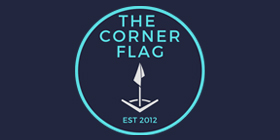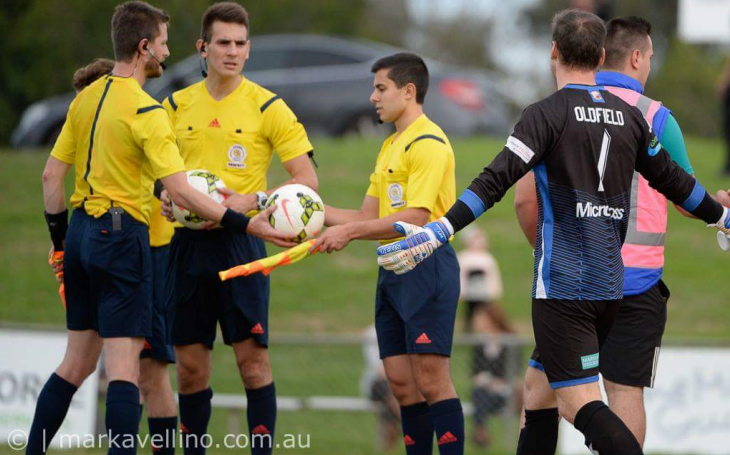All images Mark Avellino except where specified
TCF recently spent time with one of Victoria’s rising stars of the refereeing fraternity to understand the unique perspective of NPL football from behind the whistle.
Jonathan Barreiro has been refereeing in the NPL Victoria since its inception. He has three years’ experience as an assistant referee in the A-League, and this season made the step up to be an A-League fourth official. Barreiro was appointed as the referee for the Round 11 NPL fixture between Northcote City and Hume City at John Cain Memorial Park. TCF tagged along to comprehend how the officiating team operates.
***
Weekend and Monday
Barreiro has an important role to play off the pitch, and as a result his preparation for the match is a mixture of both organisational activities, development sessions as well as personal training. His week leading up to the fixture at Northcote started the previous Saturday when he officiated the Melbourne Victory and Melbourne Knights match at Epping Stadium. Sunday was a rest day and then following work on Monday, he undertook a personal fitness session mainly based on cardio and running.
Tuesday
Tuesday evening Barreiro was out at Ringwood SC, serving in one of his off-the-pitch capacities. He is head instructor for the FFV Referees Eastern branch. This means once a month he coordinates a 90-minute branch meeting bringing together referees at all levels to provide general updates, review of the rules and have a development and educational discussion.
Tuesday is also important as it serves as roster-day when all referees receive notification of their upcoming fixture. Barreiro explained it can often be a challenge for referees not knowing where you’ll be on the weekend and when you’ll be refereeing.
Referees will generally remain within their geographical branch region to officiate matches at the NPL level; there may be some travel around the various venues in the top tier of Victorian football. The scheduling is a balancing act for the branch administrators to maximise the coverage of fixtures, whilst at the same time respecting referee availability or lack thereof on a week-by-week basis.
Wednesday-Friday
On Wednesday, Barreiro was up at 6:30am to have a swim session before heading to work, and then on Thursday it was the formal weekly session for referees. This is a 90-minute session in Noble Park led by referee trainer Perry Mur, starting at 6.00pm. Friday was a light fitness session after work in preparation for what was a Saturday fixture at Springvale White Eagles.
Barreiro, however, received notification of a change in his NPL assignment. It was still a Saturday afternoon fixture, but instead of travelling to Springvale, it would be at John Cain Memorial Reserve in Northcote for their match against Hume City.
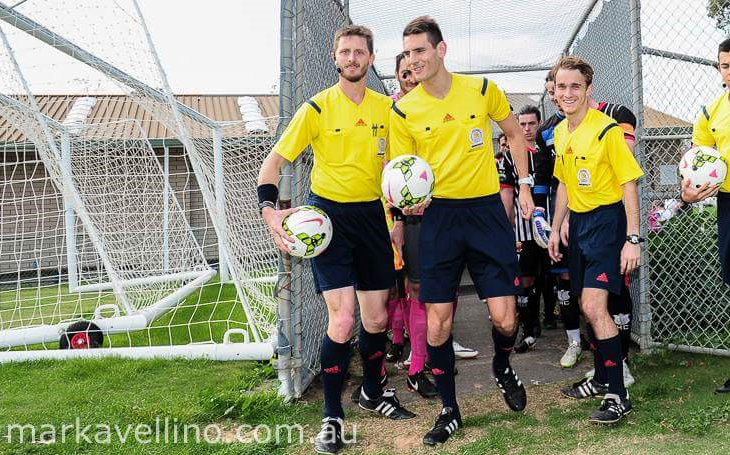
Saturday – Gameday
Saturday was game day, and instead of sleeping in prior to the 3.00pm kick-off, Barreiro was up early and headed for Knox. Every Saturday morning there is a 90-minute training session for new referees at the Knox Regional Football Centre. New referees must attend at least two sessions before they grace the pitch for the first time, and on this occasion Barreiro had 10 referees going through their paces in the practical session.
Barreiro arrived at the ground well in advance to provide himself and his colleagues Andrew Walkington and Luke Camilleri time to prepare. Their first activity was at the half-time break in the Under 20s match when they walked the pitch. It is important to check the lines, the general pitch conditions as well as the netting in goals. Barreiro explained it is a task some referees can sometimes gloss over and may be seen by others as tokenistic. However, from the referees’ perspective it puts them in the right frame of mind, and, most importantly, sets them up for a successful match.
Previously, experience has taught Barreiro to focus on the details and identify issues early and deal with them. If a ground hasn’t been used for a while, or it has experienced high levels of rain, the lines may not have been re-marked, and as a result the reduced visibility can have an impact. The sidelines may not be so critical with the assistant referees so close to them, but being able to clearly see the penalty area is critical, especially with coaches and players so willing to provide constructive feedback on any penalty decision.
It was upon returning to the rooms when Barreiro was asked for his opinion on the Northcote’s initiative to support Breast Cancer Network Australia’s annual Pink Sports Day. It was apparent Barreiro wasn’t fully across Northcote’s efforts, and specifically their plan for the senior team to wear a special pink jersey. Looking at the Hume City Under 20s, who were wearing a red and white vertical striped jersey as they walked on to the pitch, the concern around a kit clash became apparent.
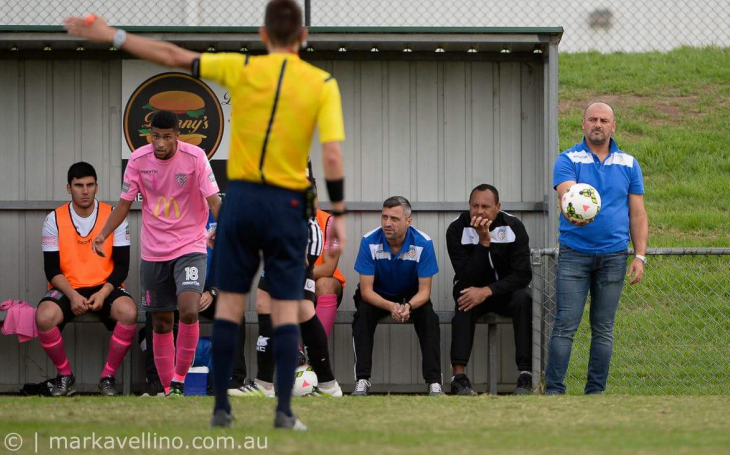
A nervous few minutes followed as discussions were had with the team managers of both teams to understand what kit was being used. It turned out the confusion came from the Hume City Under 20s wearing their home kit, whilst they were the away team, and that the Hume City seniors would be wearing the correct away kit of black and white.
Once in the referees’ room, Barreiro explained the kit clash wasn’t something they normally came across at the NPL level, but did come up occasionally with special events such as today. More importantly, he indicated there was also the potential for clashes with the referees and a playing kit.
Historically, the FFV had only approved two refereeing kits, that being the jersey in navy blue or yellow. Barreiro had a personal experience with this clash during a Pascoe Vale and Heidelberg fixture. Pascoe Vale were wearing their navy blue kit and Heiderberg their traditional yellow, which created a challenge for Barreiro as he had no alternative option. He went with the yellow option and Heidelberg coach George Katsakis was more than happy to share his thoughts on the choice during the match when some of his players mistook Barreiro for one of their own.
FFV referees manager Luke Brennan could see the dilemma, and in 2016 a new third option was available for NPL referees: Adidas’ solar blue jersey. It may seem like a logical decision, but it is one that needs to take into consideration the impact of having all NPL referees go out and buy a new $50 jersey.
It was at this point when assistant referee Andrew Walkington pulled a rabbit out of the hat. Actually, it was a communications set he took out of his bag. Today, the three referees were going to be ‘mic’d up’ using the professional equipment. In this scenario, it was a personal kit Walkington had invested in. The top level gear used in the A-League can reach between $4,000-$5,000, but other options were available for around $1,500.
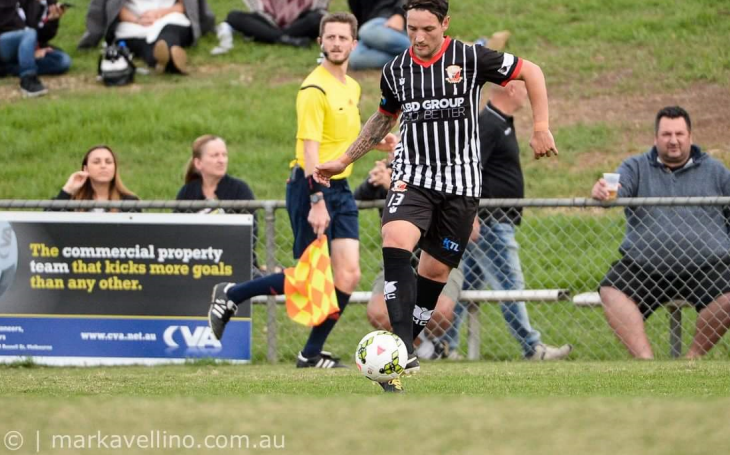
The Northcote match record was duly delivered, which prompted discussion on facilities and the rooms allocated to match officials. The referees agreed the Northcote room was of adequate size and quality for the NPL, and then proceeded to easily identify those clubs or grounds with the least referee-friendly facilities. When asked about the best facilities in the NPL there was no hesitation, with all three referees answering CB Smith Reserve and Broadmeadows Valley Park. Hume City’s ABD Stadium in Broadmeadows got the nod as favourite due to having separate rooms and thus split facilities.
The Hume City match record arrived and the referees reviewed the line-ups for both teams. Barreiro had a quick chat with his colleagues regarding some general instructions around his communication style. It was his first time refereeing with his two particular assistants, and the use of the communications gear was also added another aspect to be mindful of. Discussion was had on the players for both teams, including who the standouts were, and potential scenarios which may escalate from the contest. Barreiro talked through the form of both teams, along with the potential levels of possession and speed on counter attacks. Importantly, he also briefed on the two coaches, their demeanour and impact on the game from the sideline.
Around 25 minutes to kick off, the referees headed out for warm-up, doing exercises, stretches and sprints. Both teams were warming up on the spare pitch whilst the Under 20s match continued on the main pitch. It was a short warm up of about 10 minutes which finished as the Under 20s match finished in a 1-1 draw. Under 20s referee Andrew Bowman had just 12 minutes to get off the ground, into the rooms, finish up the match record and get prepared to walk out as the fourth official for the senior fixture.
Bowman finished the books with six minutes to spare and welcomed the Northcote team manager into the rooms, who dutifully handed the payment to the Under 20s referees – a critical task that the referees ensure is never missed. Barreiro suddenly pulled out the magic foam spray from his bag. He explained it was a leftover from an A-League match and he may as well use it if he needed to.
The whistle was blown to marshal both teams to the race, and everyone strode on to the pitch three minutes before start time. Northcote’s promotion of Breast Cancer Network Australia continued with public recognition of some of the women who play an important role in their club and giving one of them the opportunity to toss the coin for the fixture.
Saturday Kick-off
At 3:01pm, the Walkington and Camilleri assistants were in position and Bowman had introduced himself to both of the coaches and nestled himself between them to serve as fourth official. Barreiro sounded the whistle and it was game on. It was a positive start by Northcote as they headed down the left flank to start play. It was an encouraging opening with flowing passes coming from the Hume City defence. And it was only two minutes into the match when Hume City coach Lou Acevski first told Barreiro how brilliant his decision-making was.
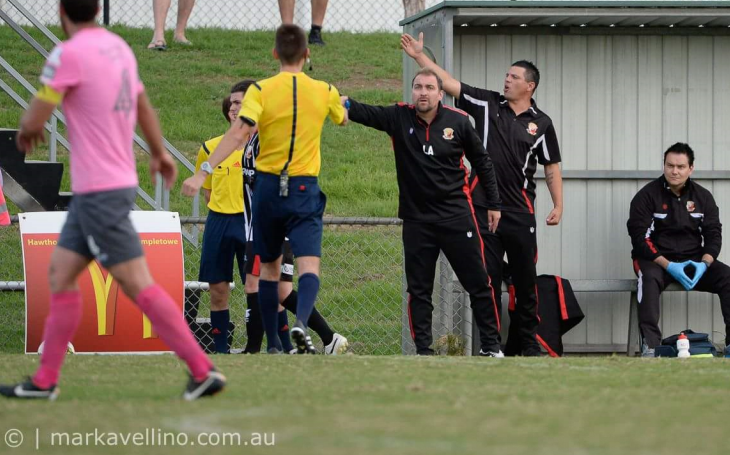
Midway through, Northcote coach Goran Lozanovski got a little excited when a slightly delayed whistle blew following a tackle on one of his players. He wasn’t overly impressed at the time it took Barreiro to make the call, and in the traditional ‘Loza’ communication style, shared his thoughts with the referee. Barreiro didn’t miss a beat and quickly came back with: “Sometimes it takes me a second or two to make the correct decision”. It was a classy comeback from the ref and drew a laugh from both coaches and the supporters along the fence. Loza was back in his box and smiling, and the game went on.
The teams were evenly balanced in the first half. Barreiro hardly needed to use the new Eclipse whistle during the match. At the end of the 45 minutes there were no cards, no goals, and not much to reflect on.
In the rooms at the break, Barreiro provided some feedback and shared his thoughts on the first session of play. A topic of discussion was players delaying the restart as it was already starting to come into the match very early. The Northcote keeper was holding onto the ball for too long. He had been warned and Barreiro had also spoken to the captain about it. He would give them a final warning and reminder as the players walked out for the second half.
The referees discussed how the communications were going, and also the involvement of the coaches. The general feeling was that both Lozanovski and Acevski were both theatrical, yelling and waving their arms around a lot, however they both showed respect for referees and didn’t take things too far.
The style of play in the first half flowed at a high pace. Northcote were looking to contest the ball well and pushing forward, and even Hume were sometimes bombing the ball long. Barreiro reflected on the need to predict the play a lot more and get himself into critical positions so he could observe the play, but also respond on a counter attack. Both Walkington and Camilleri on the sidelines commented on the pace and the high line both teams were playing, and the need to remain vigilant for the offside traps and fast counter attacks with the ball coming over the top.
As the discussion continued, Barreiro had his attention on his watch, playing with it and pressing buttons. He happily claimed “6.5km in the first half,” reflecting on his efforts in the first 45 minutes.
The referees and players filed out for the second stanza. Barreiro again had a quiet half of football as Hume City took control and stepped it up a notch or few. They found the net five times, running away for what became an easy win. The final whistle sounded, players came up to shake the hands of the referees, and within three minutes they were all back in the rooms.
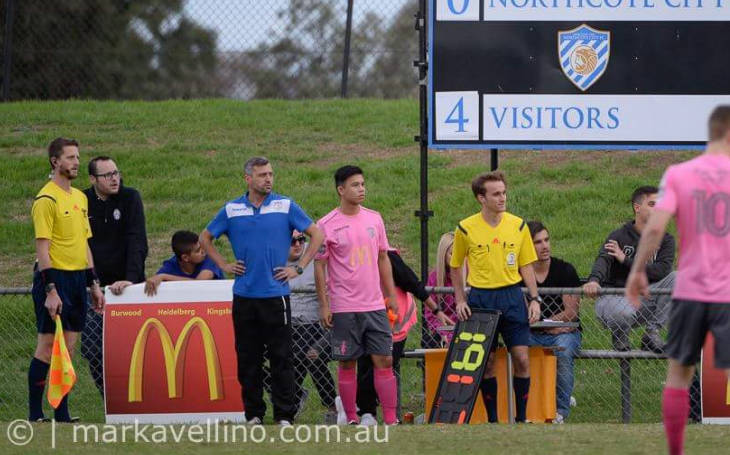
Gameday – Final Whistle
Barreiro talked through the goals, ensuring his notes matched the assistants’ for the match record. The substitutes were entered into the book and the team reflected on how it was a well-controlled game without any cards being issued of any colour. Walkington packed up the communications gear and Barreiro pressed the buttons to discover his second half yielded just over six kilometres of effort.
Overall, Barreiro reflected on a what he thought was a good game. There were a few touch-and-go dissent decisions, however he felt comfortable that they were dealt with using clear verbal communication and body language. It reflected back to the talk he had given at the branch meeting earlier in the week, when he emphasied the importance of body language and hand gestures to make sure the player involved, as well as everyone else, knew what the conversation was about and the fact it was a warning. In this match, however, he commented that he didn’t need to reach for the card – but in a more heated encounter it may have been necessary.
Whilst he didn’t go out there to create a constantly moving game, Barreiro reflected that it was advantage galore on the pitch. There were some 15-plus decisions with late tackles or otherwise that led to an advantage decision and delivered free-flowing play and the speed being kept high.
Barreiro indicated that Northcote played a competitive game, but once a team gets a few goals down, you can see the heads drop. It is a challenging position for the referee, as although the result may seem wrapped up, the contest is never over for the referees until they blow the final whistle. There is always the potential for a late challenge, a last minute comeback, or a close penalty decision, so it is critical to remain switched on.
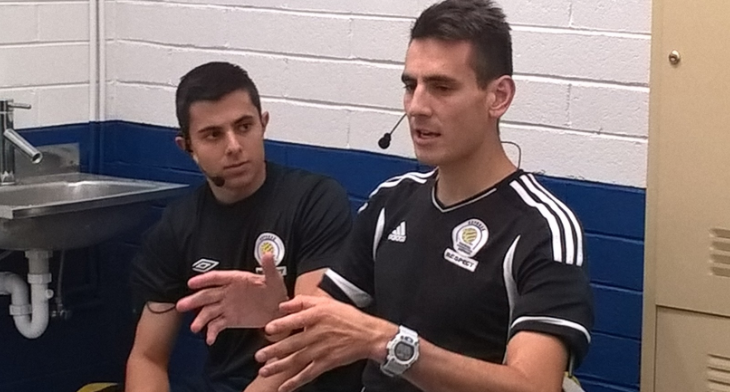
The referees talked through the votes they needed to distribute for the FFV Gold Medal. Selecting a 3-2-1 from the line-ups was necessary, and Barreiro ensured each referee had a say and provided input into the decision. He reflected that he finds it valuable to gain the thoughts of the other referees, especially the fourth official now they have them, as sometimes during the match the focus isn’t on individuals but the play more broadly. As such, it can be hard to pick individuals out; this is why the votes really are a team effort.
The day comes to a close. For Barreiro, it could be another week of training for next week’s NPL fixture, however there are travel plans to adjust his routine. As a member of fourth officials in the A-League, and being part of the FFA Referees Development Group, he together with his fellow referees are part of a rotation program. It is designed to give the referees exposure to different leagues and the nature of flying around the country on a regular basis to perform this duty. Barreiro has already been to Brisbane to referee, and in the coming week is off to Canberra to officiate in the NPL there. In the coming months he will also travel to Sydney and Adelaide to complete the rotation.
Just like the players of the NPL who train during the week and juggle club commitments with family and work obligations, the FFV referees of the NPL face those exact same challenges. They can be considered semi-professional in what they do, and in the case of Barreiro, he is actively looking for opportunity to further develop himself and push himself to the next level in the A-League and beyond. In his case, he not only delivers on the pitch for 90-plus minutes each weekend, but has committed himself to the FFV and the future of football refereeing by dedicating time each week to guiding, mentoring and growing the next generation of referees.
